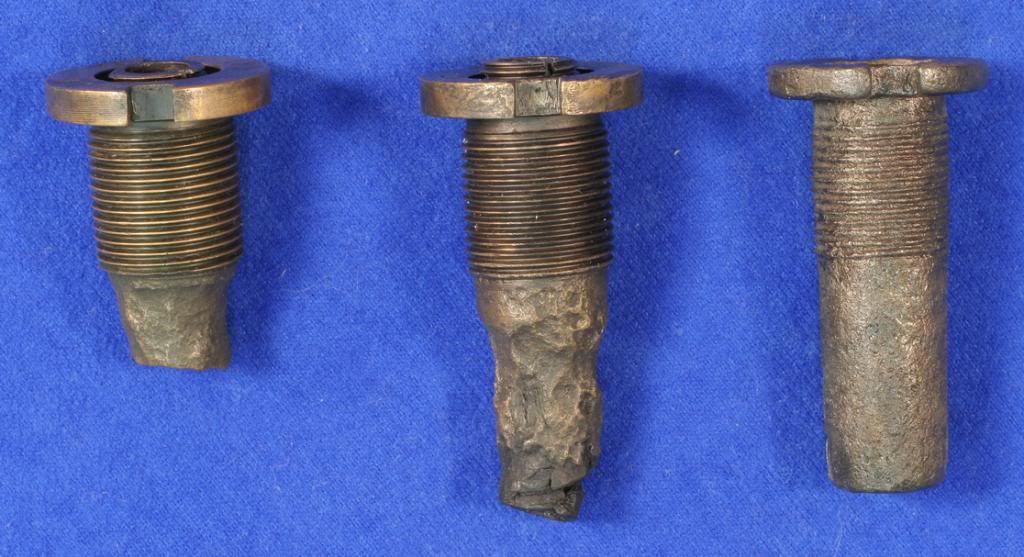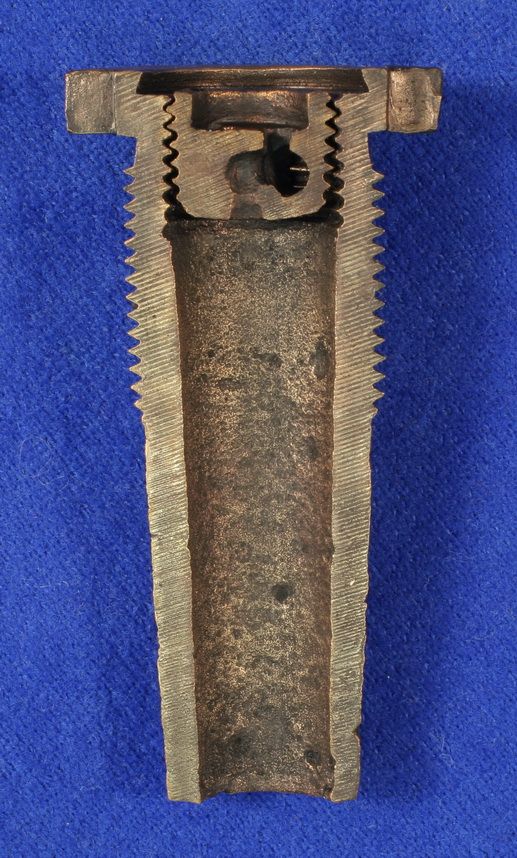Mike - Thank you for the image of the lead seal tab, very nice example. I will tease you and say that you need to have the lead seal cleaned, to remove of all of the lead oxide - white powder. Your comments on the manufacture date makes sense, do you know the patent date on the fuze? I was under the impression that Cyrus Alger had his "improved" design by 1857. An earlier date could indicate one of the earlier design / prototype models.
Carl - good comments on the fit of the threads. I will have to go back and check through the collection, and see what the average "fit" was, some of the adapters are frozen and cannot be removed. After a very quick look at a few ~ 7 of the better fuzes, there are some interesting comments to make. I was going to start anther post on fuzes and corrosion, but will start the topic here.
The following comments apply to fuzes extracted from cast iron shells, which were recovered from a salt water wreck site. The black powder reacts inside the shell, and a number of chemicals are produced - including hydrogen sulfide gas. If the seal between the shell / fuze is a good one, then the gas concentration builds up inside the shell. Hydrogen sulfide is very corrosive to brass, and the brass fuze, the lower shaft section below the threads, is eaten away. The front face of the fuze is not affected by this chemical reaction, but is affected by the galvanic action between the brass / cast iron, and the brass remains in very good condition. Look at the two sets of images below, they are the same three fuzes.


The fuze on the right was found separately, and has corrosion over the whole surface, inside and out. The other two, left and center, were removed from 9” Dahlgren shells. The one in the middle experience some HS corrosion, but the left hand one suffered to the point that most of the lower fuze shaft was eaten away. Following on from this, the HS gas also corroded away the inside of the fuze, and there is corrosion on the adapter screw threads.

The adapter originally had parallel threads, and if you look closely at the sectioned fuze, you will see that the bottom ½ is now slightly tapered – from HS corrosion. This sectioned fuze, is an unfired fuze! I have a few (intact – not sectioned) fuzes, which were removed from shells that have the adapters in good condition, with parallel threads that are a “good” tight fit. I like to “think” that the tradesmen making the fuzes, were good and knew what what they were doing, but we all know what happen in reality – and have all seen Monday morning specials!
Dave – what differences do you see on the side slots for the inserts. There will often be differences from one manufacturing plant to another, and between batches, and even between the workers. I am curious to know, as the examples above (the ones in good condition) will be very close to original dimensions.
Jim J.